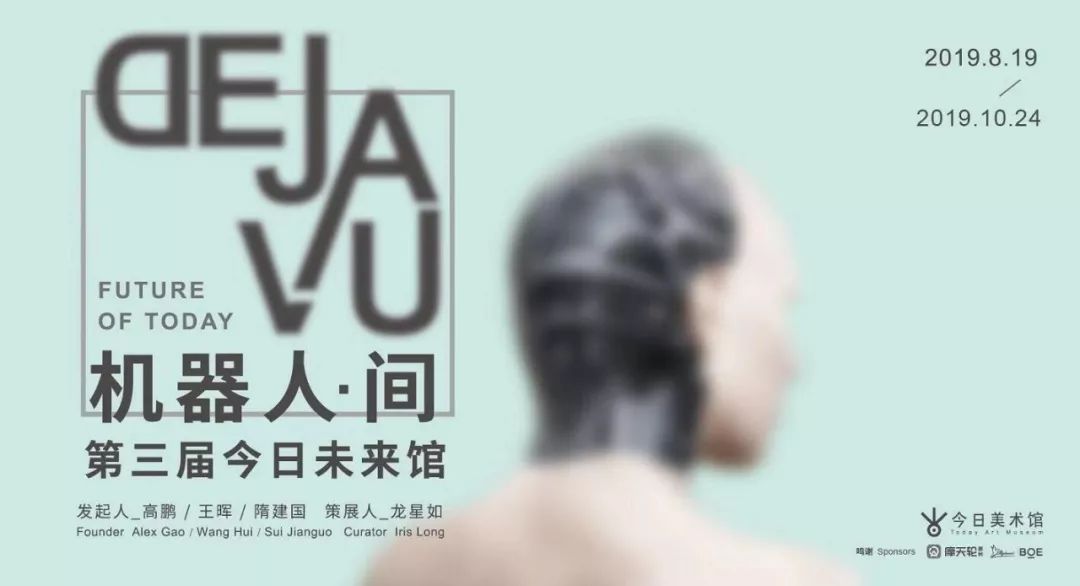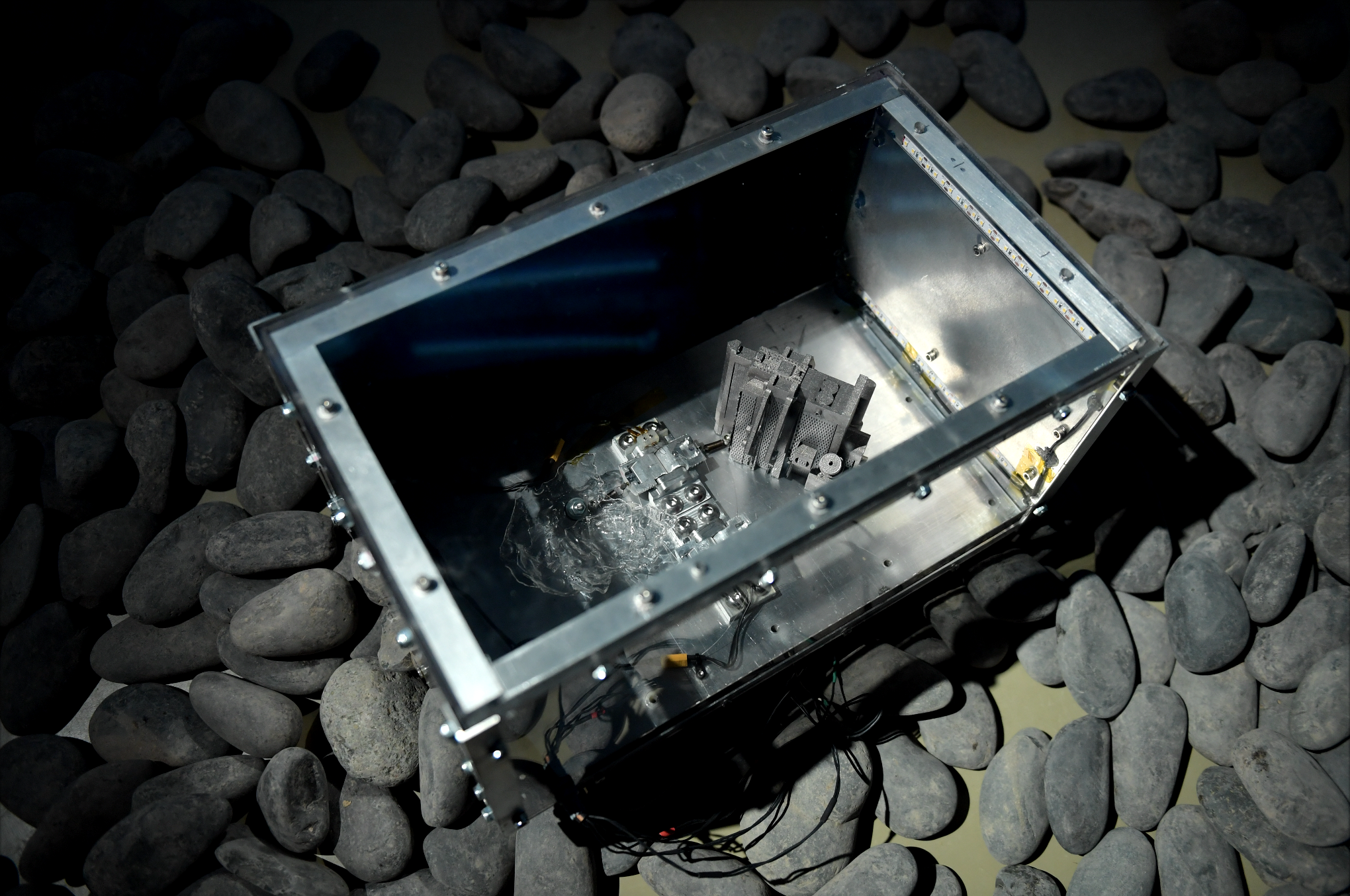DEJAVU 机器人间
19 AUG 2019 - 24 OCT 2019

| 策展人 CURATOR |
|---|
| 龙星如 Iris LONG |
| 主办 ORGANIZER |
|---|
| 今日美术馆 Today Art Museum |
“机器人间”的存在,是马克·维瑟预言的回响:“最为深远的技术是消隐的。它们被编织进日常生活的罗网之中,不再可见。”轰隆作响的数据中心矗立在人烟稀少之地,光缆们只在无人海岸悄然登陆。“机器人间” 是一场集体性的似曾相识(de ja vu):近年来“开机”的类人机器人们(从“索菲亚”到谷歌研发的智能机器人),渴望成为古代剧场里“机械生神”(deus ex machina)的近世倒影;今天化形为柔软的,消隐的,会帮你关灯的智能助手(如Siri, Cortana和Alexa),仿佛幽暗遥远的时代里混迹人间的神怪。对科技现象的解释总比现象慢1/4拍,符号和隐喻尚有隙可乘。
“机器人间”是一个展览的名字,一个或许即将浮现的世界。今日美术馆的第四层首次开放双向观看线索,展览架设的时空,形成一道颤颤巍巍地振荡在技术进程与人性演进之间的晨昏线。顺时针的行走将会经历算法从无形到被赋形,能力逐渐扩张,最后人类消逝,机器徒留世间的场景。逆时针的行走则会随同近乎全能的未来机器,不断考古自身起点,在时间回卷中逐步剥离能力,直到还原于0和1的初始定命。“机器人间”故而也是“机器”与“人”之间。
大卫·多奇在《无穷的开始》里,则对“任何过程的可计算性”确凿不疑。抛弃了人视角的机器观,似乎将我们引向符合“底层”崇拜的领地,一个被技术可供性所隐去的,由数字,字节,模型,进程和测量所统治的运算世界。这也恰恰是岌岌可危之处——把对世界的认知交由纯粹抽象与中立的计算(computability)托管,也是对自然心智与感官经验的主动遗弃,是如风吹光,如刀断水的徒劳与枉然。
展览是想象中人类与机器之命运的缩影,信息与实体的丝连尚未绷断,人类与机器共处的情态仍交织着荒诞与丰满。如果交叉层叠的运算结构正在不断消隐,直至人类对机器“用而不知”,再无痛感,艺术家或许可以让它们重新浮出水面,审视消隐中被遮蔽的错漏与偏见,向外建立更多想象式的关联,向内挖掘更多隐秘的故事,像小说家也像记者一样,重新回到“环环相扣地理解世界”,回到尚有生命可言的“机器人间”。
Mark Weiser’s prophecy, that “”, echos in the exhibition de ja vu. The clattering and roaring data centers tower in sparsely populated regions, while submarine optical cables land ashore at uninhabited coastline. The exhibition is in itself a story of de ja vu: a collective one, about machine and human. The humanoid robots “turned on” in recent years (from “Sophia” to the Google’s robots), are echos of the ancient “deus ex machina”, whilst the gentle, invisible virtual assistants, the Siri, Cortana and Alexas who turn off lights for you, are as if reminiscence of the gods and spirits who live with us, camouflaged, in the dim, ancient times. The explanation of the technoscene tends to be slightly slower than the technological phenomena itself, allowing room for symbols and metaphors.
De ja vu is the name of an exhibition, a world that may emerge. The fourth floor of Today Art Museum firstly opens a bidirectional way of seeing. The time-space the exhibition constructs, is a terminator that vibrates and quivers in between the evolving trajectory of technologies and that of human race. The clockwise storyline narrates how algorithms transform from invisible to embodiment, gaining capabilities all the way, until a post-anthropocene moment when the machines become the sole residents of the earth; the counter-clockwise path, meanwhile, tells the story in reverse: it starts with a comprehensive machine contemplating on its origins, and follows its archaeological process until the machine encounters with its reductionist fate, fading into 0s an1s. De ja vu, hence, is a feeling of “de ja vu” between human and machines.
In The Beginning of Infinity, David Deutsch expressed a irrefutable kind of “the computability of any process”. A non-anthropocentric view of machines, seems to guide us towards a zone of worshipping the “computablity” as underlying rules of everything, a computational world concealed by technological affordance and ruled by numbers, digits, models, processes and measurements. Yet this is also what’s at risk: to deposit our cognition of the world with abstract and “neutral” concept of computability, is also to voluntarily abandon the natural mind and sensory experiences, an act in vain.
The exhibition can be seen as an epitome of the fate of human and machines, where the delicate silk between information and physical entities remain, while the human-machine coexistence still interweaves with absurdity and richness. If the interlacing computing structures are fading away from tangible experiences, until a moment when human can longer feel the existences of the computing infrastructure and interfaces, artists, perhaps can allow this awareness re-surface, examining the errors and prejudices in the “fading-away” process. The artists are as if journalists or novelists, who make imaginary connections outwardly or inwardly conduct research on the hidden, and return to an integrated way of understanding the world - a “de ja vu” of what we were like, in the very beginning.

